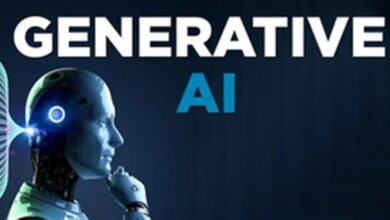generative AI | Music Industry Blog

The music business is bifurcating. On one side, a new AI, fandom, and creation centred business is coalescing. On the other, the traditional business is pulling the draw bridge over its moat by pushing up streaming royalty thresholds to ensure the soon-to-explode long tail knows it is not welcome. AI has arrived at just the right time, acting as the change catalyst that will propel the consumerisation of creation to the fore. The news of music AI start up Udio’s $10 million raise is just another piece in the puzzle.
The traditional music business has a long tradition of building moats. The genesis of the recorded music business was the first moat. Until the phonograph, everyone and anyone could be a performer and take part in music. Then suddenly, a business was built around those deemed ‘good enough’ to be able to record. The music business’ moat was thus dug, with the audience on one side and the artists firmly on the other. In later years, the moat was widened with a succession of developments, such as record label marketing budgets, TV appearances, exclusive licensing deals, expensive recording technology, and so forth.
The rise of the creator economy, AI, and consumer creation will probably not drain that moat. High quality music and artists are not going to be replaced – that is simply not the point of AI. Virtual artists are an entirely different proposition (!) but AI and consumer creation open up another, entirely new path. Instead of having to swim across the traditional industry’s century-old moat, this new, parallel movement / industry can, and will, simply walk around it and carve out its own space. This will be a good thing for both sides of the future industry and mirrors what already happens in video.
No one confuses a TikTok short for a Netflix original because they operate in entirely different lanes. Right now, both sides of music occupy the same places (streaming and social). For as long as it was only the long tail of single millions of independent artists, that awkward cohabitation just about worked. But not for much longer. Now, we have tens of millions of creators uploading music to social (but not streaming) and we face the prospect of hundreds of millions of consumer creations, perhaps even a billion, according to Bandlab’s Meng Ru Kuok.
And as much as this consumerisation trend will largely happen outside of the moat, some of it will happen inside it too. Look no further than the reports that Spotify is planning to allow users to modify songs. So, perhaps the demarcation will be modification within the moat and fully fledged creation outside of it.
What is fast approaching in the music industry’s rear view mirror is what MIDiA termed ‘Music’s Instagram Moment’, where making music becomes just as accessible to the average consumer as photos and video are now. Thom Yorke might have uttered the words ‘anyone can play guitar’ but in practice, most people don’t – either because they do not have a guitar or the will to learn. But anyone can write a text prompt. The traditional music industry’s moat kept the accomplished safely clear of the enthusiast. AI changes all of that.
Of course, the counter argument is that all this consumer creation will likely be garbage. But that misses the point. This is not about music as consumption, nor even fandom. It is music as expression and identity. Professional photographers did not look at Kodak and call them merchants of garbage because they enabled millions of consumers to take overly exposed holiday snaps with fingers obscuring the lens.
The current fear around AI is it creating million stream songs, but that is not the point either. Don’t worry about the one AI track with a million streams, worry about the million AI tracks with one stream.
After all, who is going to listen to all this consumer creation? The friends and family of those who make it. If each consumer creator has, say, ten people who will listen to what they create, and they make a track a month, that results in 120 streams minimum per year (assuming each person only listens once). Turn that one consumer creator into 100 million people (15% of Spotify’s current user base) and you end up with 12 billion streams. Now imagine that 25% of those 100 million consumer creators make two tracks a month, have more than 30 friends that listen, and that their music is good enough for those friends to each listen twice, then the total annual streams becomes 45 billion. Now imagine if those consumer creators make music every single day….
It is when you consider this sort of scale that it becomes clear why it is good for both sides of the business that they occupy different spaces, because they serve different purposes.
Yes, consumer creation will compete for time. It will turn a considerable amount of time that is currently spent listening into time spent creating. Surely that is only a positive thing. Music as a form of expression and creation. It can – and should – be for everyone.
If this kind of thing interests you, then keep an eye out for a major new report coming from MIDiA: Bifurcation theory: How today’s music business will become two. More on that soon!



